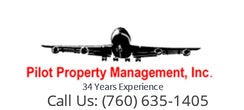Property management falls into two main categories; rentals and homeowner associations.
Many management companies provide only one of these services. Strangely, managing rentals requires a license, while managing homeowners associations presently does not.
Rental management involves 4 facets.
- Preparing the property to receive tenants
- Scrutinizing the prospective tenants.
- Handling issues involving the tenants or the safety and integrity of the unit
- Providing accounting services.
Each is an important function performed for the landlord.
- Preparing the property for viewing is a key to obtaining good tenants. If the unit is clean tidy fresh and sparkling it is infinitely more attractive to a prospective tenant than the opposite. Further it provides the tenant with a taste of the type of landlord they will be dealing with and set an expectation of how the landlord expects to receive it at the end of the tenancy. If like does indeed attract like, a scruffy home will appeal to a scruffy tenant.
- Checking work and landlord references and examining creditworthiness is essential to finding a less risky tenant. From time to time a tenant is going to loose their job, suffer an uninsured or costly injury or sickness, separate form their spouse or suffer some unexpected and huge expense. If their credit is unblemished they may be able to financially stay afloat during the disaster, while righting their ship. Poor credit and lack of resources will hinder recovery. A poor history suggests more of the same.
- Inspecting and resolving are the keys to superior management. Walking a property periodically reveals items that are in need of repair and timely repairs are way cheaper than costly replacement. Resolving issues in a timely fashion can lower the temperature between parties. By the time of trial in court temperatures are at boiling point.
- Proper accounting practices with open availability of records is key. Our customers have 24 hour access 7 days a week to their financial history on line. While many do not choose to check they perhaps sleep easier than wondering if their funds are safe in someone else’s trust account. We also carry a fidelity bond in the case of misappropriation by any employee. 2279
Homeowner association management
Is similar to managing a rental property with some additional work. The owners usually have been organized as a non profit corporation under the Davis Stirling Act of 1985 for common interest subdivisions. This means they must file tax returns and file biennially with the State. They have a variety of “governing documents “ which state how they will behave in terms of voting, collecting dues, violations of the rules as well as the normal bylaws.
So not only must the affairs of the entity be planned run and organized, but the members are expected to be guided by a certain code also. Governance and communication become sciences or art forms depending on who tells the story. Poor governing and lack of communication are death to such organizations. The industry that sprung up 30 plus years ago to assist in management following some years of self management by these sometimes unwieldy groups is still in its infancy although two trade organizations exist for the training and education within the industry.
One aspect often overlooked by association is the long term planning for the renewal and replacement of what is known as “common area property”
This may include the structures if the association is a condo development with such elements as roofing, plumbing, sewer, lines, painting, termites, and in some cases streets, pools, clubhouses etc etc. One of the perennial difficulties facing owners is the proper allocation of funds for their replacement. Some owners expecting to live within the community for a long period might want to set aside funds on a regular basis while those who anticipate leaving soon may have the propensity to defer the cost until a later date. (See related article on budgeting)
4000
